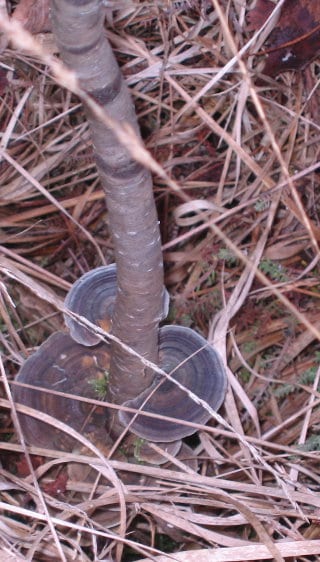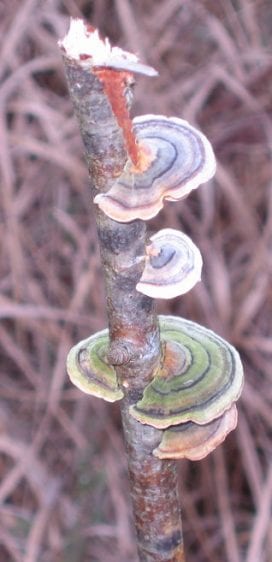
We had a very good turnout of volunteers this morning, including a number of children. The 09:30 start and the grey morning didn’t seem to deter people (New Year resolutions?) which was excellent as we managed to get a lot of work done. Volunteers were, as usual, treated to excellent refreshments provided by Jacinta at break time, and we had the additional treat of a bonfire and being able to watch the NT move large logs using their tractor.
The National Trust are continuing the slow process of removing a few of the Scots Pines every year in order to expand and link up the areas of heathland on the Warren, in line with the plan to improve the status of the site as a SSSI (Site of Special Scientific Interest). The NT ranger explained that the objective, over the long term, was to have larger areas of wet and dry heathland dotted with trees, including oak and rowan which are highly beneficial to locally occurring wildlife as well as the occasional mature Scots pine, whilst leaving clumps of trees and shrubs to provide an additional habitat and shelter for wildlife and to break up the view across the site.
Tree felling on the Warren and other lowland heathland sites is sometimes disapproved of by some people in the mistaken belief that it is wrong to cut down any tree. The argument is often made that heathlands are a man-made feature and before the intervention of humans Britain would have been extensively covered by trees, so dense tree cover is the natural state. This is a misunderstanding. Whilst it is true that the clearing of primeval woodland for fuel and livestock grazing led to the creation of extensive areas of lowland heathland in Britain, even before that process began there would have been glades and clearings created by fallen trees, fires and the activities of herbivores (some very large herbivores once roamed Britain), and these heathlands would have been maintained by the grazing of herbivores. The existence of species that thrive on lowland heathland is evidence that lowland heathland is a natural habitat in Britain. (Conversely, upland heathlands are often intensively managed to the extent that they are over grazed and burnt so that areas of scrub and woodland that would naturally occur and provide a richer wildlife habitat that supports a wider range of native species, such as the endangered black grouse and capercaillie, are prevented from growing).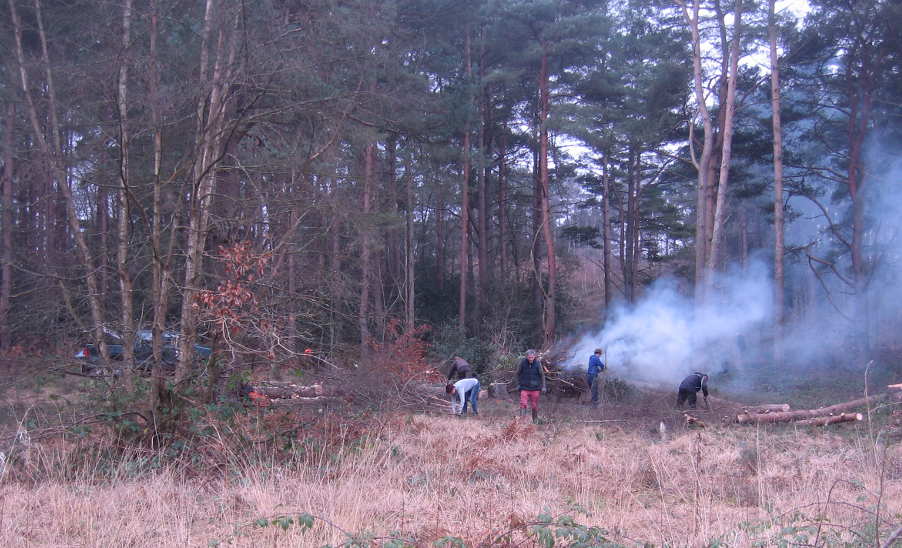
With the loss of so much heathland to agriculture and forestry, fragmentation by roads, development and mineral extraction, and degradation due to the growth of invasive scrub and bracken, coupled with the pressure on the remaining sites due to human activities, it is important that the remaining areas of lowland heathland are maintained and improved in order to prevent the loss of native species of plants and animals. Cutting down some mature trees helps to restore the heathland to its natural state, and the periodic removal of saplings and shrubs mimics the natural processes that would have prevented the heathlands becoming overgrown by trees.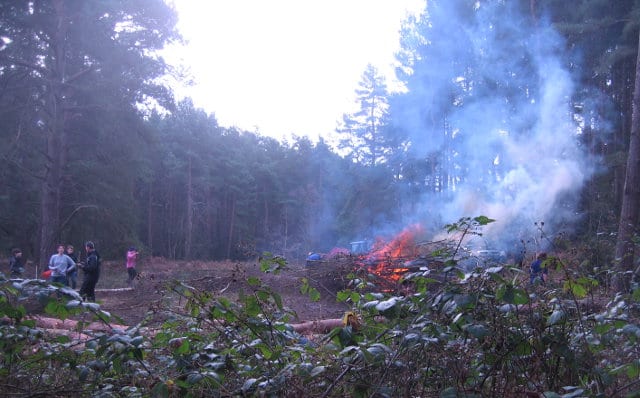
On many managed heathland sites cattle or horses are used to manage the vegetation growth. Due to the characteristics of the Warren it is not possible to use livestock so humans have to do the job instead. In the area where the large pines have been felled we removed unwanted saplings,small trees and shrubs such as birches and brambles and the children did a great job of hauling branches and small trees to the bonfire to be burnt.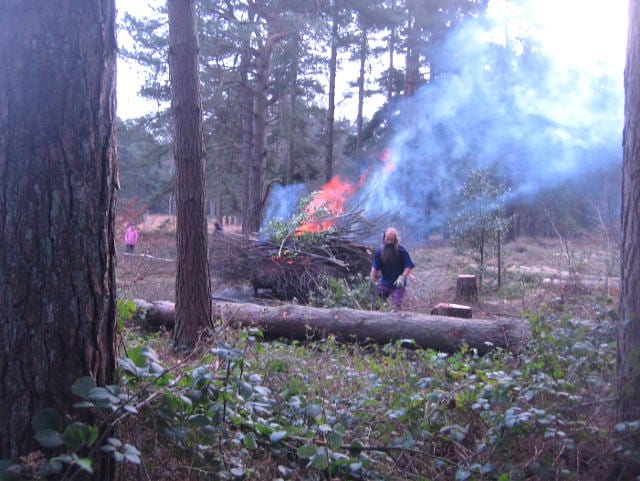
While working on the wet heathland area we stumbled on this attractive fungus
